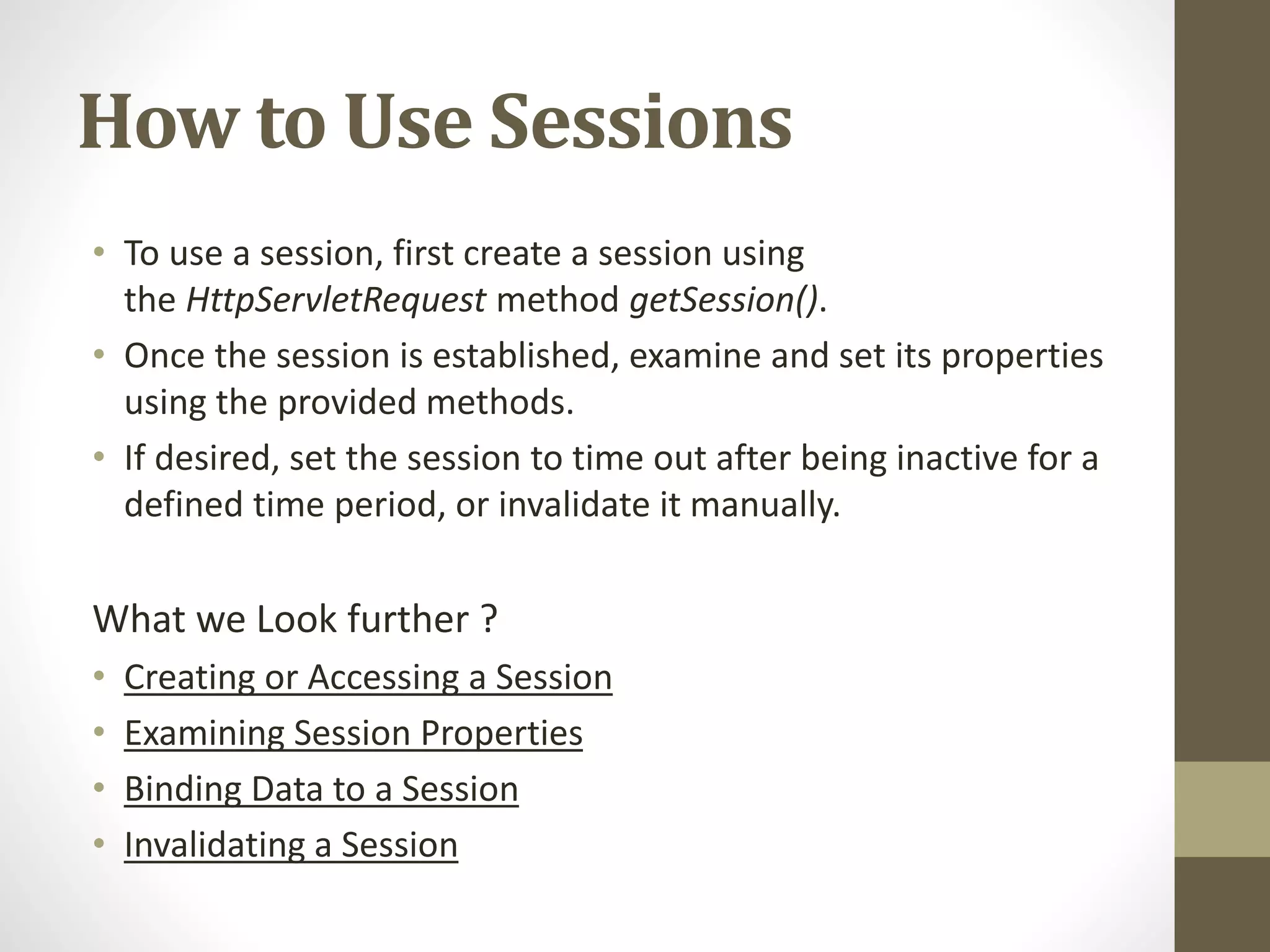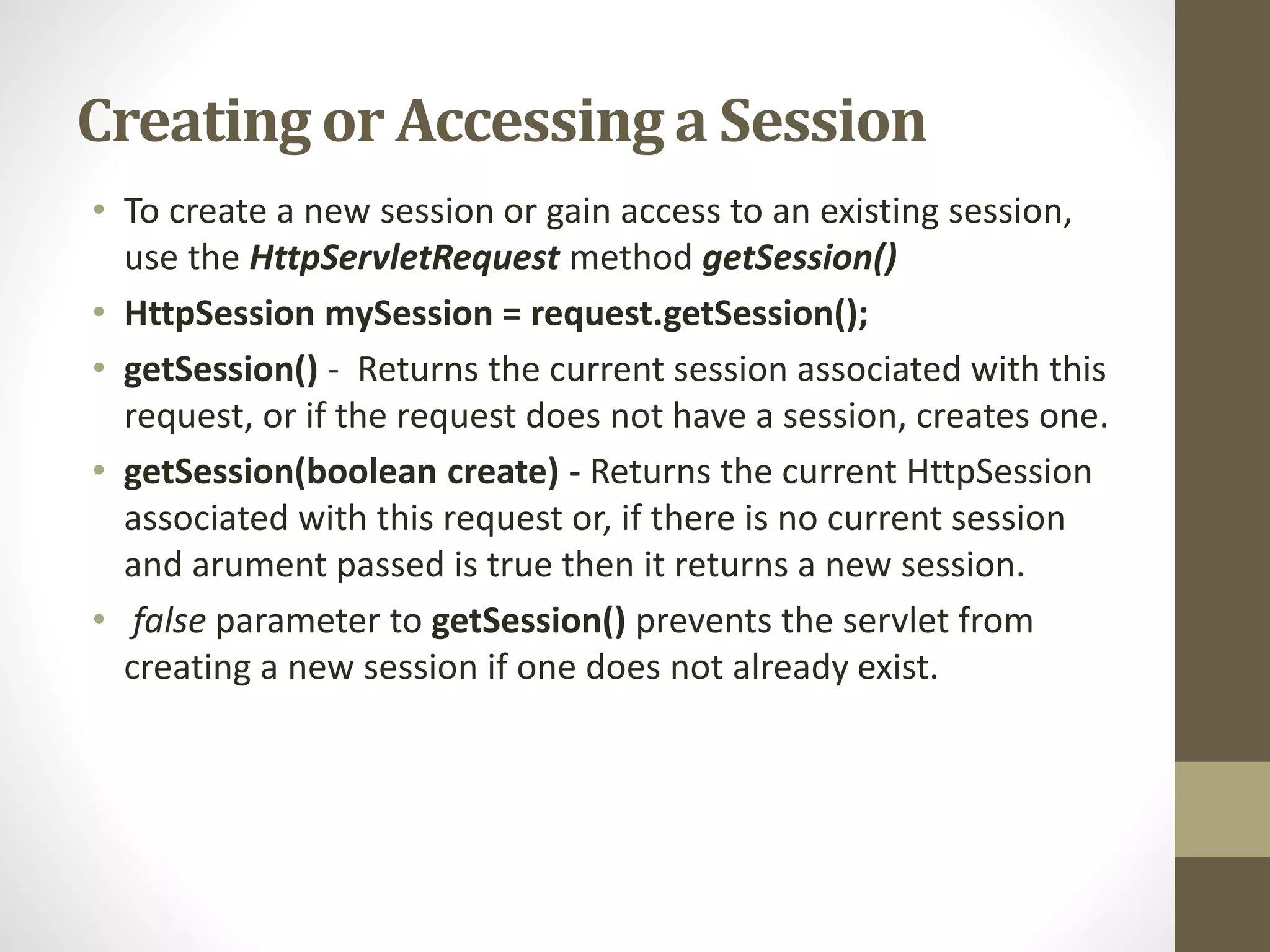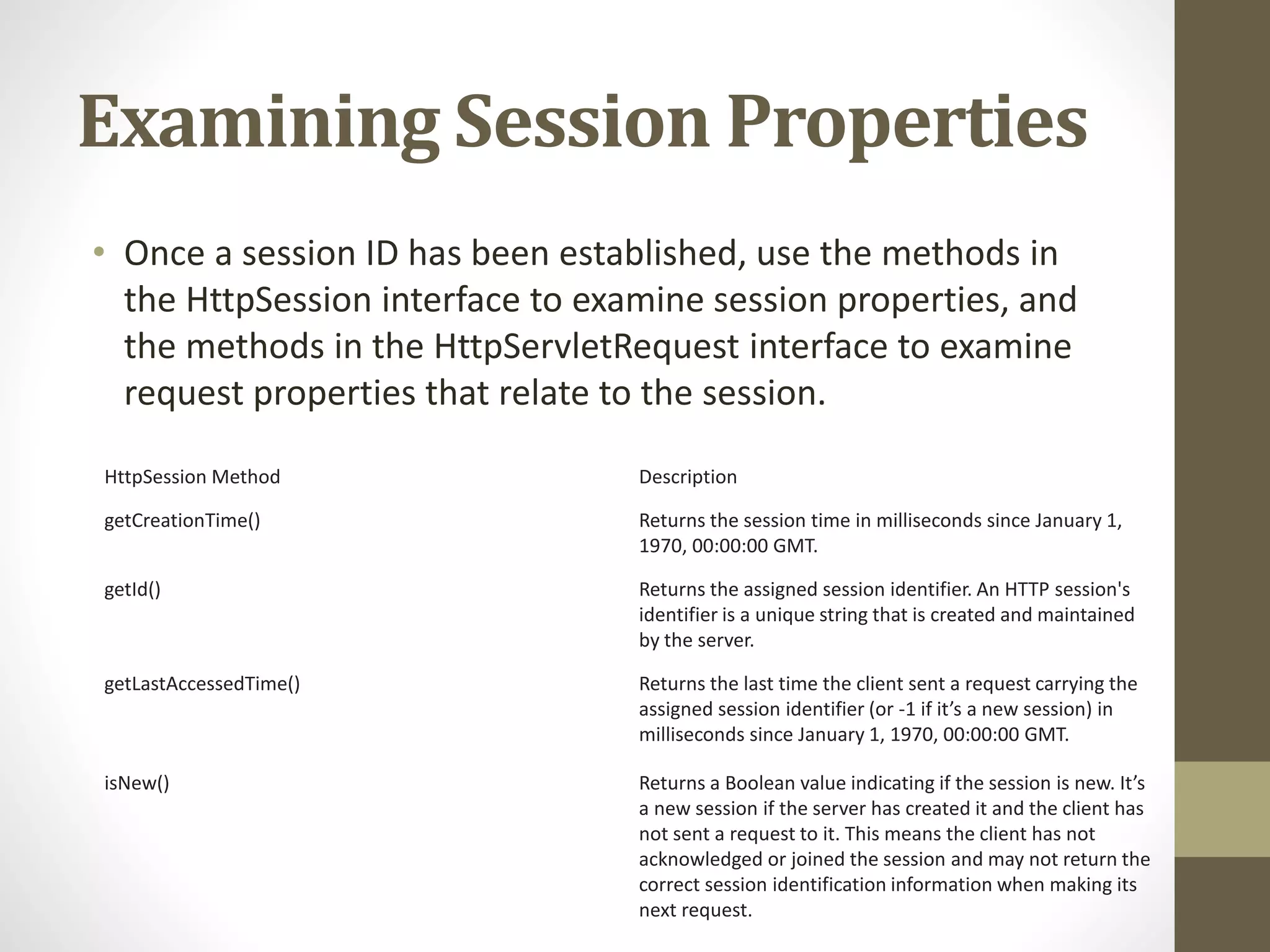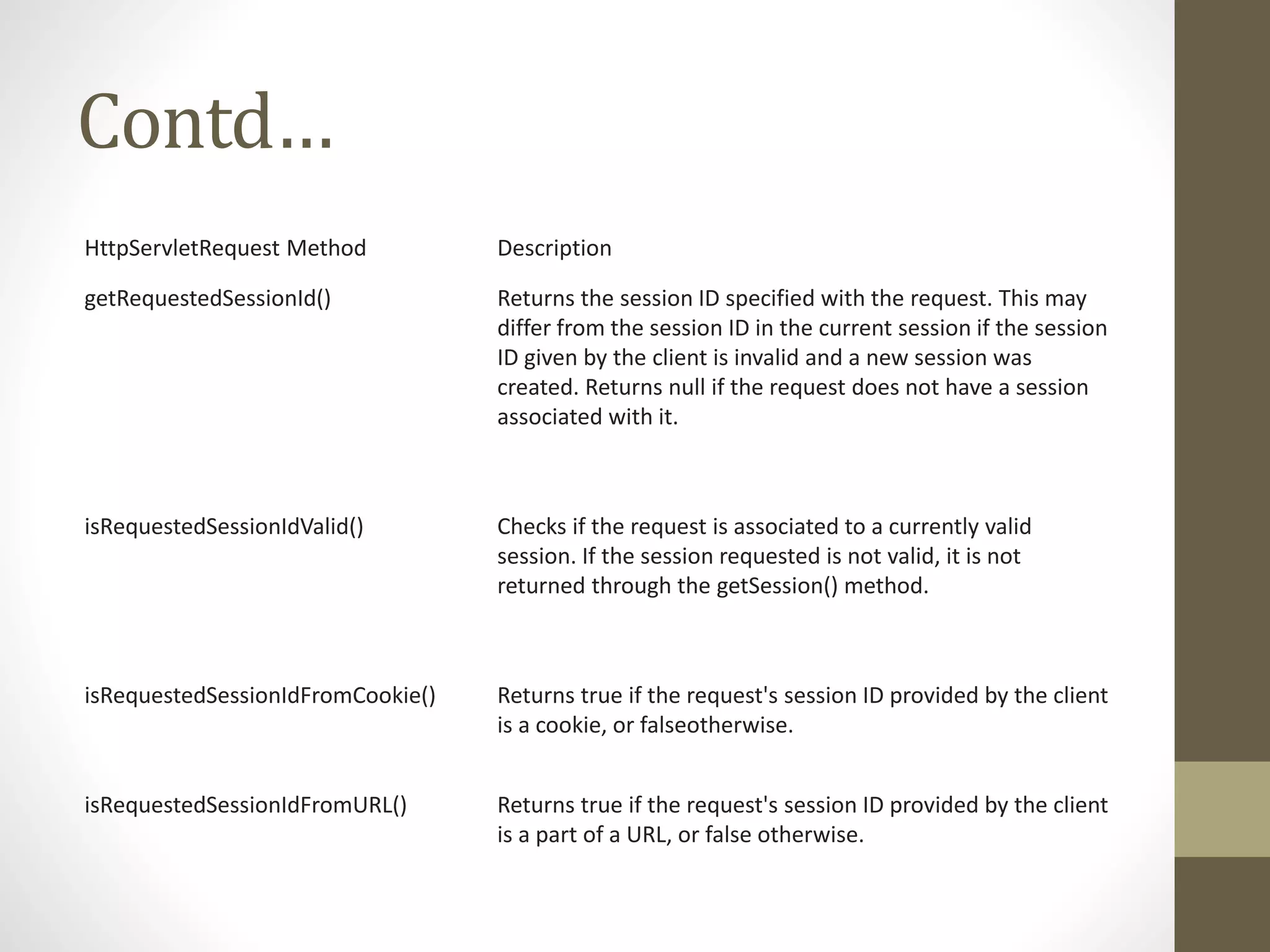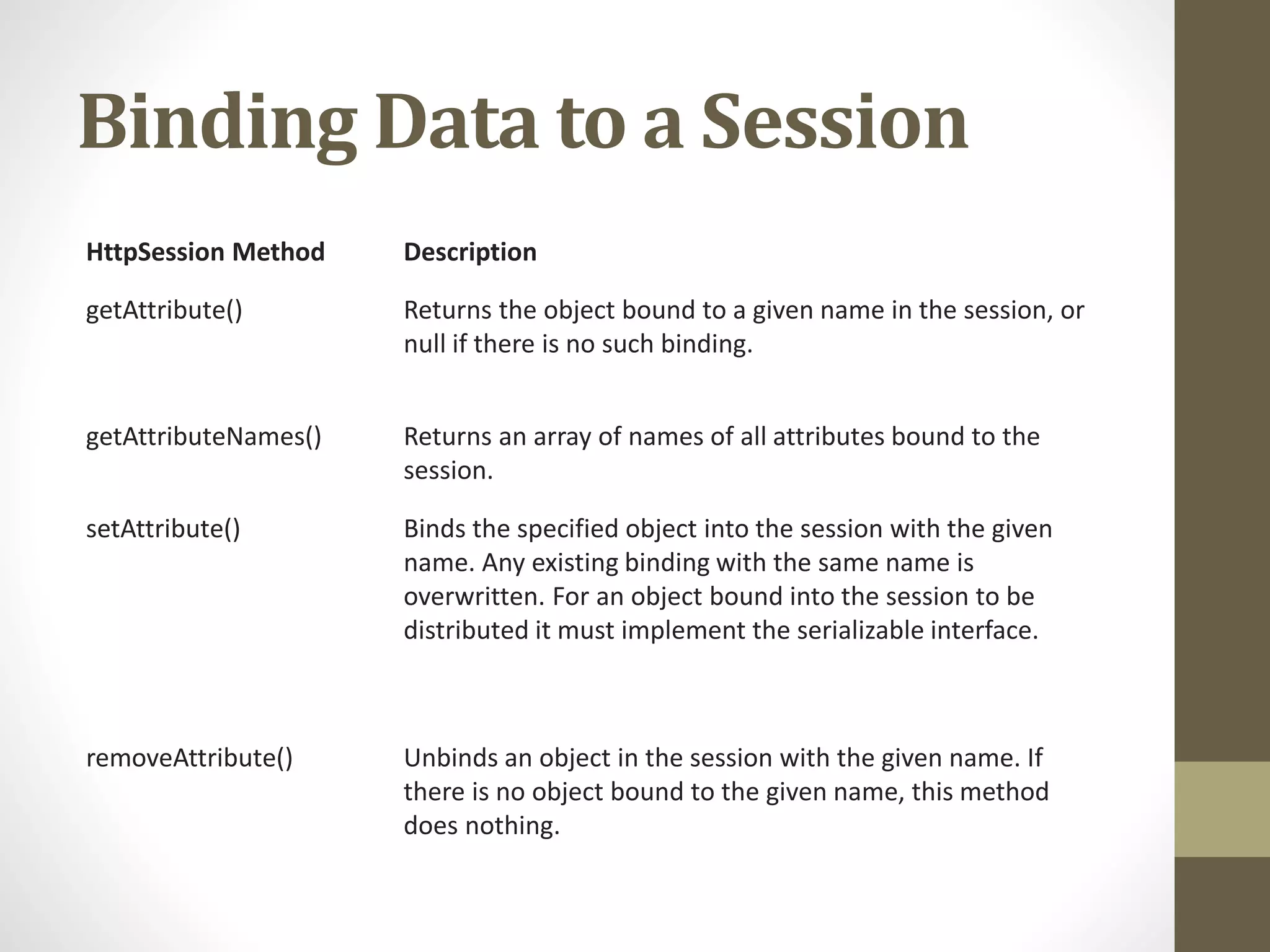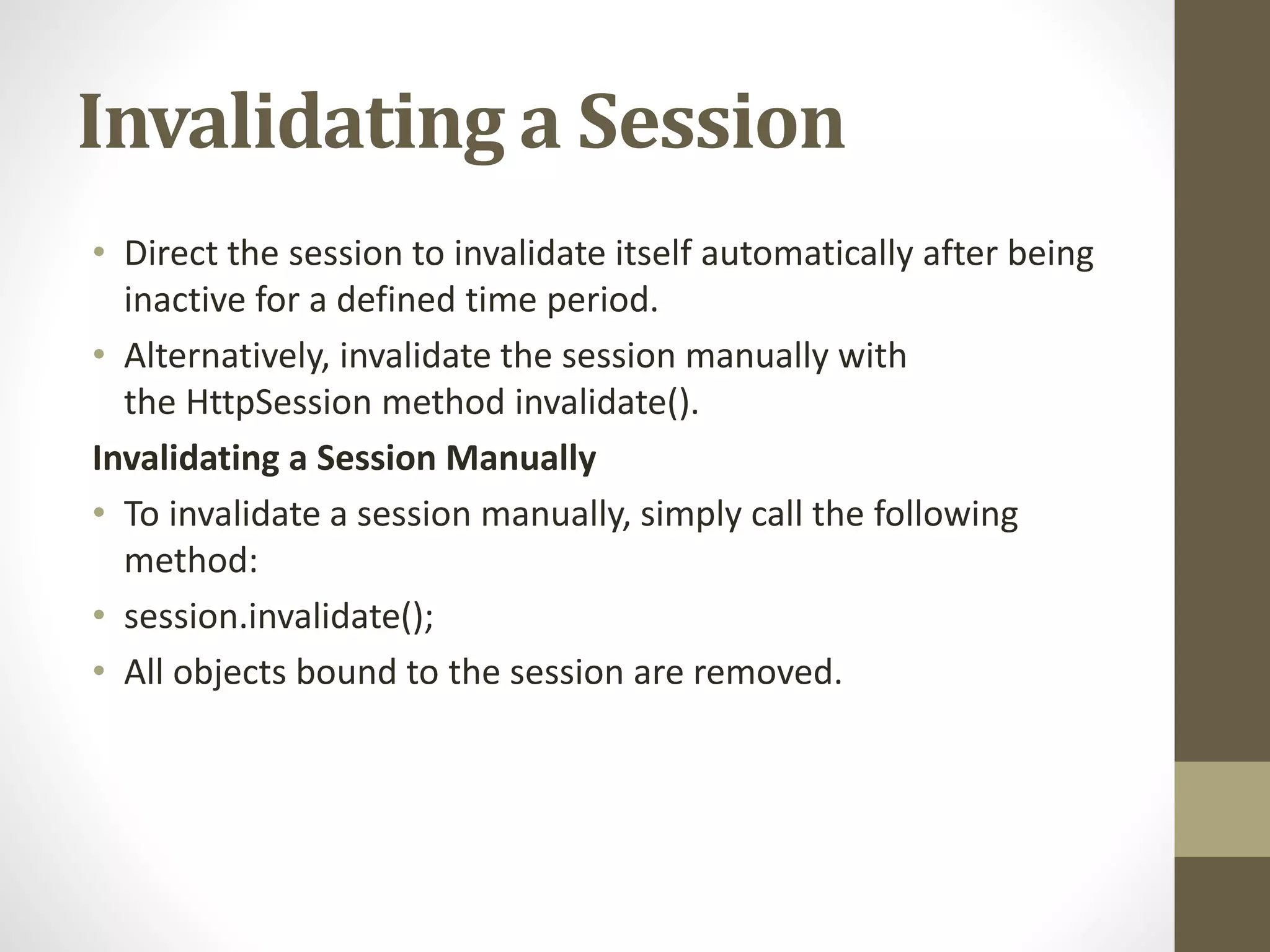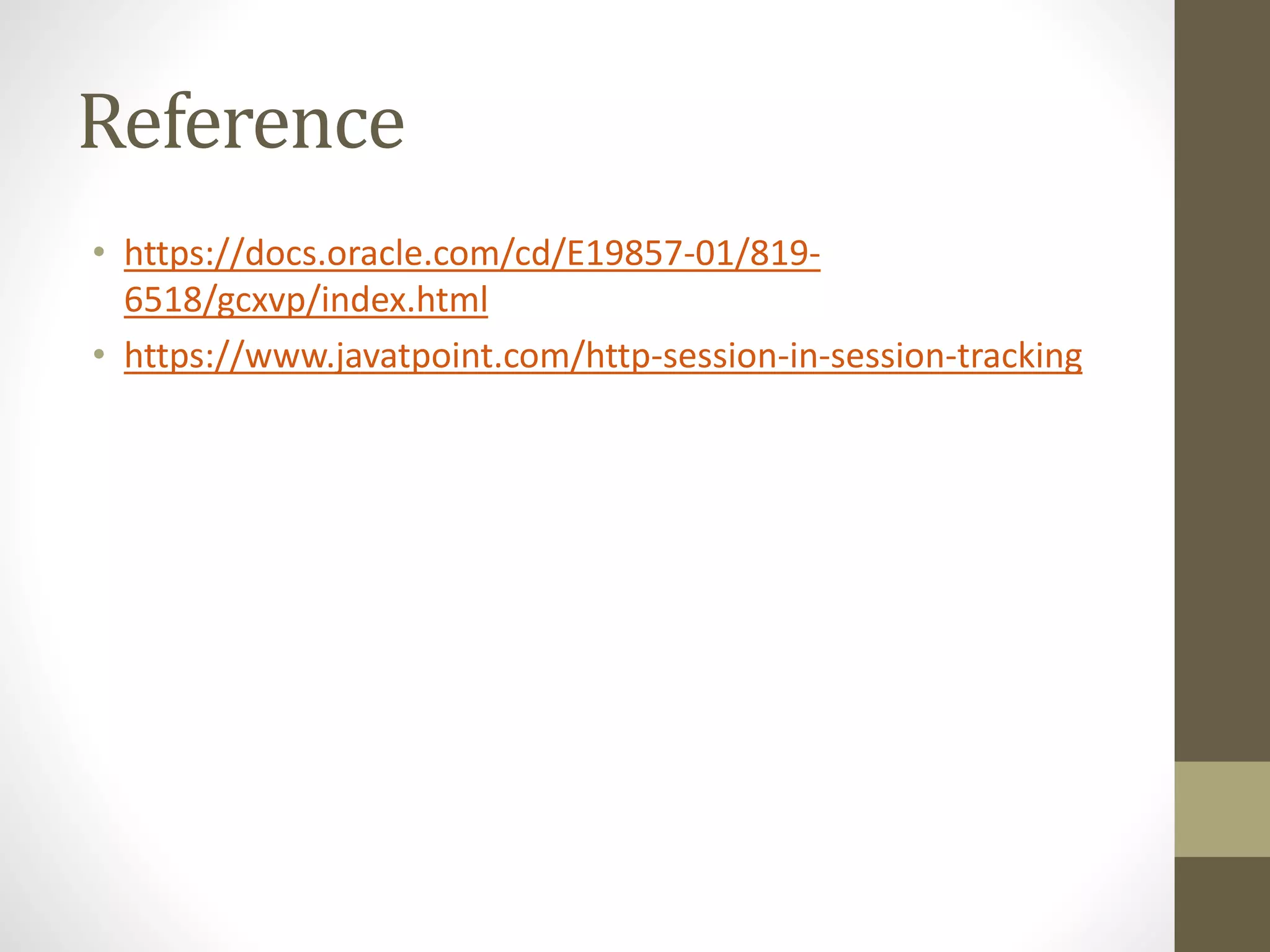The document provides a comprehensive overview of managing HTTP sessions in Java, focusing on creating and accessing sessions, examining session properties, binding data, and invalidating sessions. Key methods like getSession(), setAttribute(), and invalidate() are detailed, along with session timeout configurations. Reference links for further reading are included at the end.

